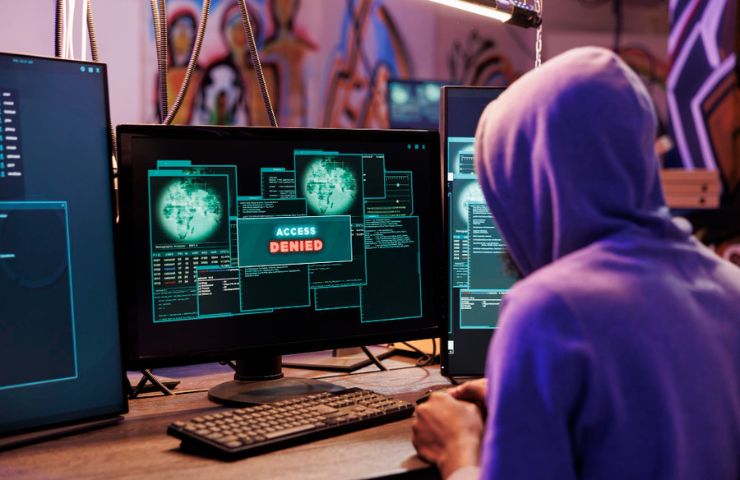
Cybersecurity threats are evolving at lightning speed. Attackers today aren’t just using brute force or random malware — they’re precise, patient, and smart. Unfortunately, most traditional security tools weren’t built for this level of sophistication. The result? Delayed responses, missed threats, and stressed-out security teams.
That’s where Artificial Intelligence (AI) is stepping in — not just as a buzzword, but as a powerful tool that’s reshaping how organizations detect threats in real time.
In this post, we’ll explore how AI is transforming threat detection, why it matters, and how your organization can start using it — even if you’re not a tech giant.
For years, companies have relied on security tools that detect threats based on known patterns. These are called “signatures” — think of them as fingerprints of known malware or attack techniques.
But here’s the issue: what if the attacker uses a new method that doesn’t match any known signature?
Worse, many of these tools throw out thousands of alerts every day. Most of them turn out to be harmless. This flood of warnings leads to what’s called alert fatigue — where security teams get so many alarms, they start tuning them out. That’s when real threats can slip by unnoticed.
In short: traditional threat detection works well for yesterday’s problems, not today’s.
Unlike traditional tools, AI doesn’t need a fixed pattern to detect a problem. Instead, it learns from data — lots of it. AI systems monitor your network, users, devices, and activities in real time. They look for unusual behavior, not just known attack patterns.
For example:
If an employee suddenly downloads 10 times more data than usual at 3 AM, AI might flag it.
If someone logs in from two different countries within an hour, AI will catch that too.
This approach is called behavioral analysis. Instead of asking, “Does this match a known virus?”, it asks, “Does this look normal for this user or system?”
That shift — from pattern matching to behavior understanding — is what makes AI such a game-changer in threat detection.
Let’s simplify this with an analogy:
Traditional threat detection is like checking ID cards at the door. If someone’s ID matches a list of known criminals, they’re stopped.
AI-powered detection is like watching people’s behavior once they’re inside. If someone is acting suspiciously — even if their ID is clean — security investigates.
This is where Machine Learning (ML) comes in. ML models learn what “normal” looks like in your organization, then alert you when something deviates from that baseline.
This helps in detecting:
Insider threats, where employees misuse access
Slow attacks, where intruders quietly explore your network for weeks
Zero-day attacks, which are new threats with no known signatures
In short, AI gives you a fighting chance to spot threats early — before damage is done.
Banks are using AI to detect fraudulent activity by spotting odd transaction patterns. For example, if a customer suddenly transfers money to an unfamiliar country or uses a device they’ve never used before, AI can flag it immediately — often before the money even leaves the account.
Large companies are using AI to detect “silent” attacks that don’t use malware at all. Some attackers use existing system tools (a technique called living off the land) to stay hidden. AI can detect the unusual way these tools are used and raise a red flag.
Security providers who serve multiple clients are using AI to scale detection. AI helps them analyze massive amounts of data quickly and highlight the most critical threats across different organizations.
These examples prove that AI isn’t just for big tech companies. It’s practical, proven, and increasingly available in off-the-shelf security tools.
Of course, AI isn’t perfect. It needs:
Clean, well-organized data to learn from
Skilled analysts who understand what AI is telling them
Regular tuning to avoid mistakes and biases
Some companies think AI will magically solve all their security problems. But the truth is, AI is a tool — not a replacement for human judgment.
Another misconception is that AI will eliminate cybersecurity jobs. In reality, it enhances them. AI handles the repetitive grunt work (like sorting through alerts), so human analysts can focus on decision-making and strategy.
You don’t need to start from scratch or hire a team of data scientists. Many modern cybersecurity tools already include AI and machine learning features — especially in areas like:
SIEM (Security Information and Event Management)
EDR/XDR (Endpoint or Extended Detection and Response)
User behavior analytics
Cloud security monitoring
Here’s how to start:
Identify one area where your team struggles with too much data or too many alerts.
Look for a trusted vendor that offers explainable AI — meaning you can understand why it flagged something.
Train your team to interpret AI results and provide feedback — the better the feedback, the smarter the system becomes.
Cyber threats are faster and smarter than ever. The old way of doing things — relying on fixed rules and manual checks — simply can’t keep up.
AI isn’t the future of cybersecurity. It’s already here.
It doesn’t replace your people — it helps them work smarter. It doesn’t solve every problem — but it gives you better visibility, faster detection, and more confidence in your security posture.
If you’re serious about staying ahead of modern threats, AI-powered threat detection is no longer optional — it’s essential.
Need help figuring out where to start with AI in your cybersecurity setup?
We’d be happy to help you assess your current defenses and find the right tools for your organization — no jargon, just honest advice.
You may also find this valuable: Why Regular Penetration Testing Is Critical for Cyber Resilience